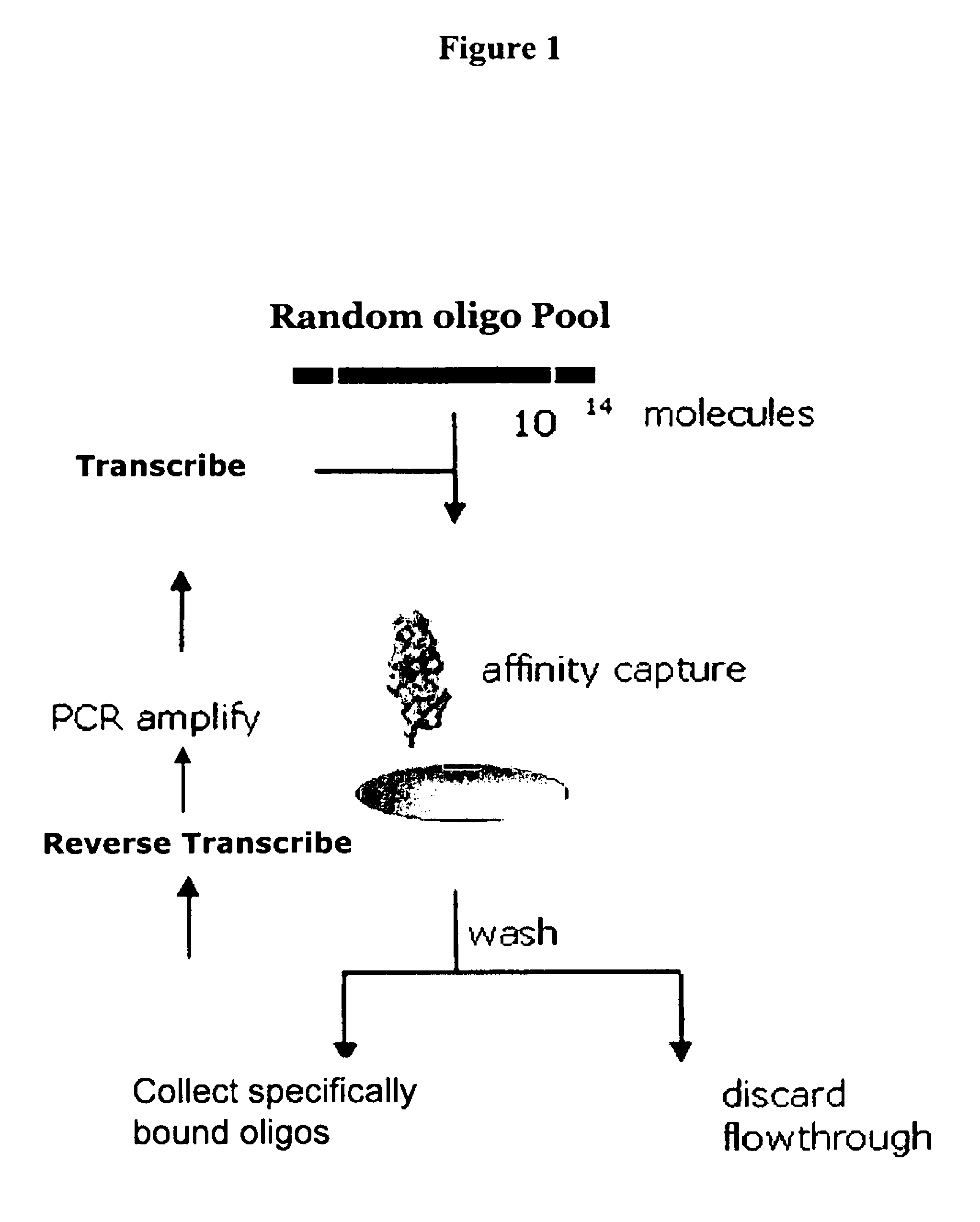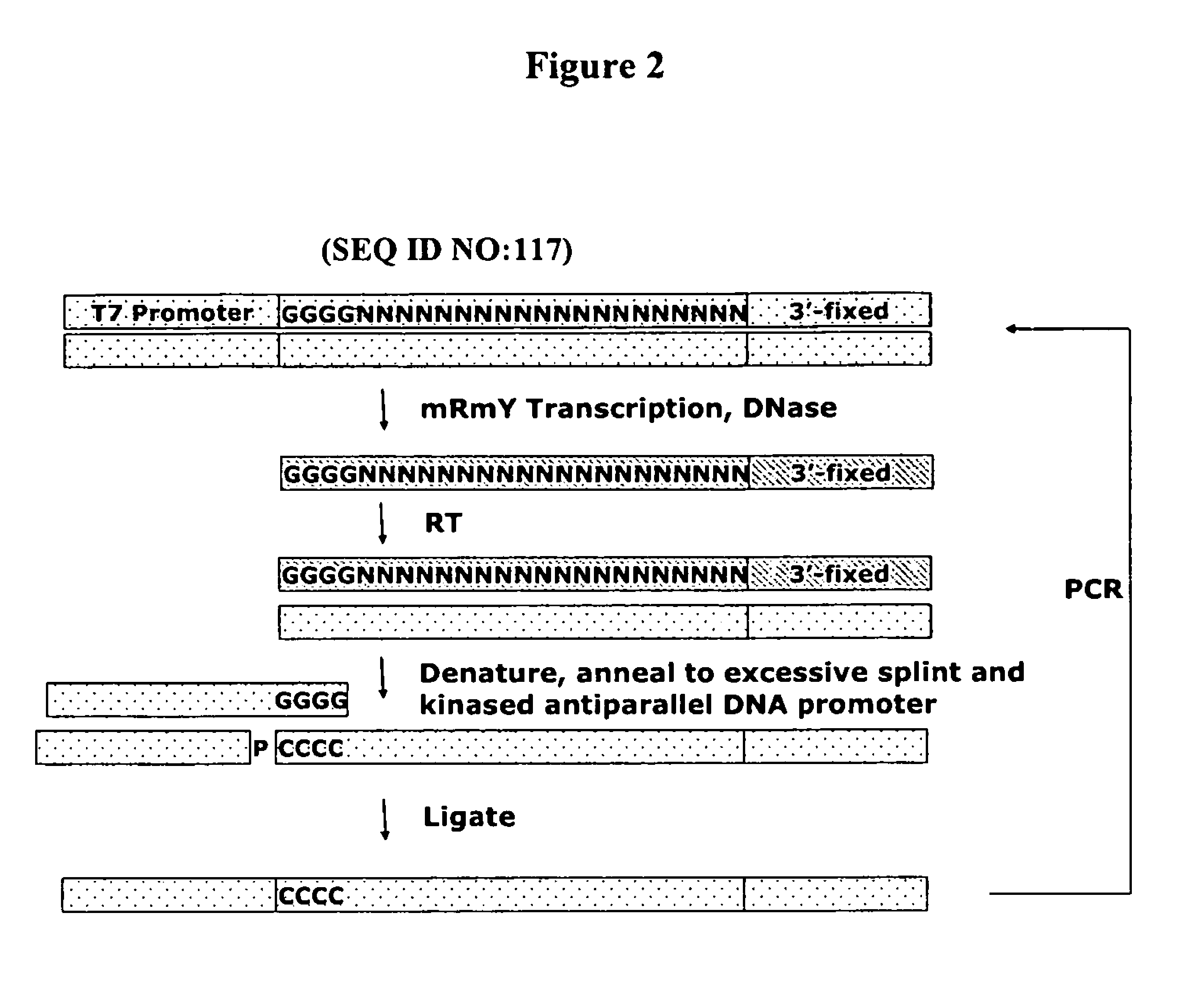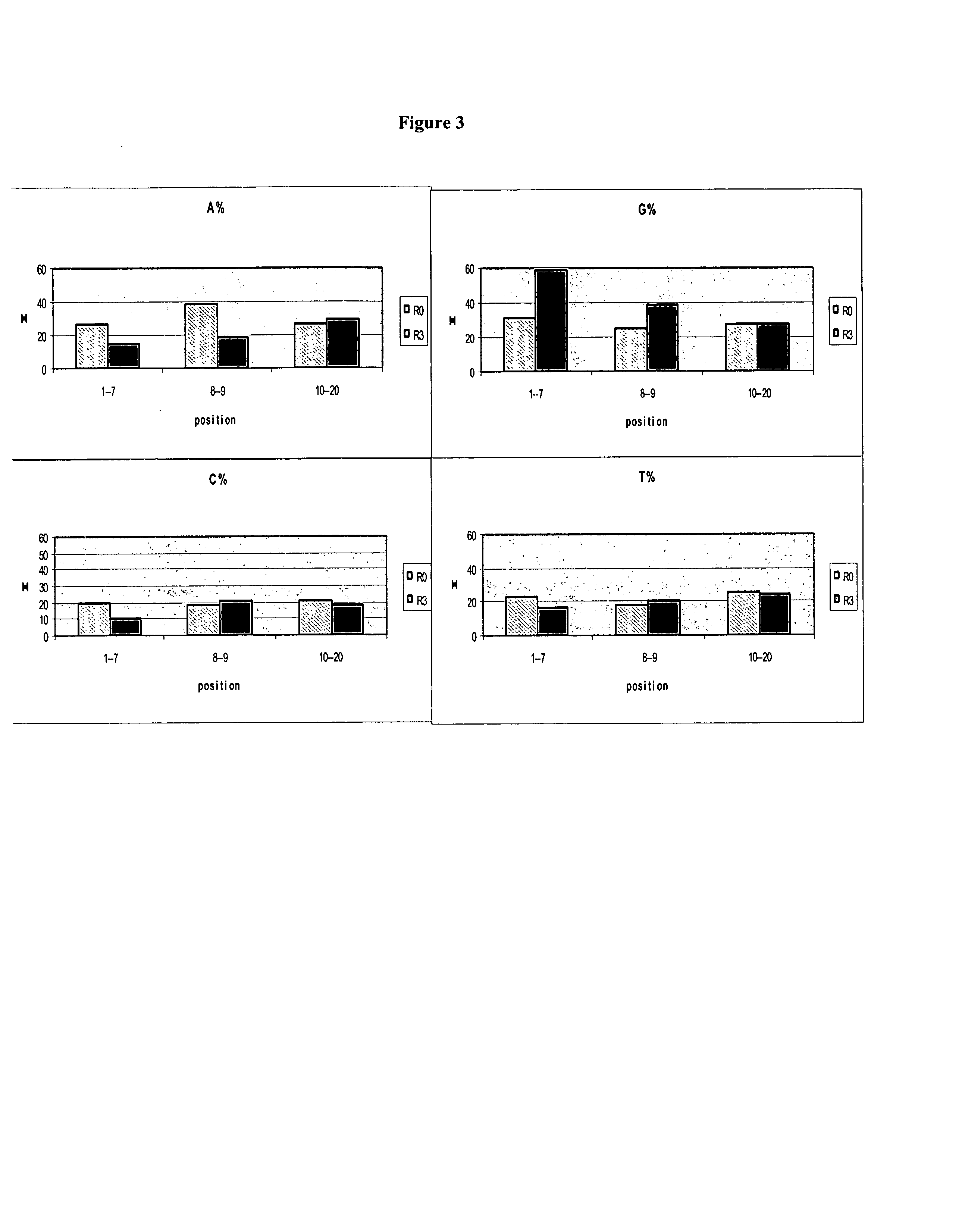Materials and methods for the generation of fully 2′-modified nucleic acid transcripts
a nucleic acid and transcript technology, applied in the field of materials and methods for transcribing nucleic acids, can solve the problems of limiting the availability of some biologics, scalability and cost, and extremely difficult to elicit antibodies to aptamers, and achieves enhanced transcript yield, transcript yield enhancement, and transcript yield enhancement
- Summary
- Abstract
- Description
- Claims
- Application Information
AI Technical Summary
Benefits of technology
Problems solved by technology
Method used
Image
Examples
example 1
Identification of 5′-Leader Sequences Using the TR-SELEX™ Method
[0180]A degenerate DNA library with the following design (shown in the 5′ to 3′ direction): T7 Promoter / G4 / degenerate 20 nucleotides / 3′-Fixed sequence was synthesized with the following sequence:
[0181]
(ARC 1140, SEQ ID NO 7))5′TAATACGACTCACTATAGGGGNNNNNNNNNNNNNNNNNNNNACGTAACCGGTTAAACCCGGGTCGATGCAGTAAGCTAGCT3′.
[0182]This library was amplified using the 3′-primer AGCTAGCTTACTGCATCGAC (SEQ ID NO 104) and the 5′-primer TAATACGACTCACTATAG (SEQ ID NO 105). The double-stranded library was then transcribed using 1× Transcription Buffer (HEPES 200 mM, DTT 40 mM, spermidine 2 mM, Triton X-100 0.01%) at 37° C. overnight under the following conditions: 2′-OMe ATP CTP, UTP, GTP 1 mM each, 2′-OH GTP 30 μM, MgCl2, 6.5 mM, MnCl2 2.0 mM, 10% w / v PEG-8000, 1 mM GMP, inorganic pyrophosphatase 0.5 units per 100 μL reaction, and Y639F / H784A / K378R T7 RNA polymerase 200 nM.
[0183]The resultant mixture was then precipitated (isopropanol, sodium...
example 2
Libraries Incorporating Leader Sequences Identified by the TR-SELEX™ Method
[0190]The identified 5′-leader sequence elements (the first 10 nucleotides of the degenerate region) from higher 2′-modified transcript-yielding clones identified using TR-SELEX™ selection as described in Example 1 were utilized to design libraries which incorporate the leader sequence elements into the 5′-fixed region, with the goal of promoting an increase in transcript yield containing 2′-modified nucleotides. In one embodiment, the design strategy incorporates the first 14 nucleotides of the identified clones (the 4 guanosines comprising the 5′ fixed region plus the first 10 nucleotides of the degenerate region) as the 5′-leader sequence immediately followed by an additional 6-8 fixed nucleotides to facilitate subsequent PCR amplification, immediately followed by a degenerate region 30-40 nucleotides in length, immediately followed by a 3′-fixed region to also facilitate subsequent PCR amplification.
[0191...
example 3
Polymerase Expression and Purification
[0197]Mutant T7 RNA polymerase, for use in the methods of the invention may be prepared as follows. T7 RNA polymerase (nucleic acid and amino acid sequence shown in FIGS. 5A and 5B respectively and described in Bull, J. J et al., J. Mol. Evol., 57 (3), 241-248 (2003) may be mutated to result in the LA mutant (Y639L / H784A), the LAR mutant (Y639L / H784A / K378R), the LLA mutant (P266L / Y639L / H784A) or the LLAR mutant P266L / Y639L / H784A / K378R). T7 RNA polymerase may be comprised in an expression vector (an example of a T7 RNA polymerase expression vector is described in U.S. Pat. No. 5,869,320 herein incorporated by reference in its entirety) or may be inserted into an expression vector following mutagenesis. The mutated T7 RNA polymerase may be engineered to optionally comprise a His-tag for ease during protein purification.
[0198]Complementary oligonucleotide sequences that contain the Leucine mutation for position 639 (agtcatgacgctggctCTGgggtccaaagagt...
PUM
| Property | Measurement | Unit |
|---|---|---|
| molecular weight | aaaaa | aaaaa |
| solubility | aaaaa | aaaaa |
| volume | aaaaa | aaaaa |
Abstract
Description
Claims
Application Information
 Login to View More
Login to View More - R&D
- Intellectual Property
- Life Sciences
- Materials
- Tech Scout
- Unparalleled Data Quality
- Higher Quality Content
- 60% Fewer Hallucinations
Browse by: Latest US Patents, China's latest patents, Technical Efficacy Thesaurus, Application Domain, Technology Topic, Popular Technical Reports.
© 2025 PatSnap. All rights reserved.Legal|Privacy policy|Modern Slavery Act Transparency Statement|Sitemap|About US| Contact US: help@patsnap.com



